[…]
The post Last-Minute Checklist for Hurricane Prepping appeared first on The Survival Mom.
from The Survival Mom https://ift.tt/gAwElSu
Bringing you the best Preparedness articles from across the Internet for over 10 years!
[…]
The post Last-Minute Checklist for Hurricane Prepping appeared first on The Survival Mom.
Estimated reading time: 27 minutes
When civilizations collapse, one of the most common ways that people die is violence. When people get hungry enough, they get desperate—and dangerous. Someone who has never stolen a thing in his entire life will break into his neighbor's home if it means finding food for his children.
Then there are the everyday burglars who already steal on a regular basis. Without the police around, the entire city is like a buffet. All they have to do is choose the right target. If they choose your home, the only way to deter them or stop them altogether is good home security.
If you're worried about societal collapse, then home security should be a top priority. You can't wait until the lights go out, then head down to the store to buy deadbolts and window alarms. By then it's too late. You have to start working on home security measures now.
In this article, we're going to discuss home security after the collapse. We'll cover doors, windows, bulletproofing, fireproofing, alarm system, safe rooms, weapons, and more.
Want to save this post for later? Click Here to Pin It On Pinterest!
There’s a lot in the news about how infrastructure around the world and especially in the United States is failing. The world is headed for a new global recession, supply chains continue to reel under multiple challenges, and our healthcare system continues to be in bureaucratic shambles.
It’s hard to imagine any country suffering a societal collapse without warning, but as history has shown, it has happened in the past and the signs are bleak for the future. In some instances, countries have fallen apart in less than 2 months.
There’s little most of us can do to correct or address threats on a global level let alone on a national level. All we’re left with is an occasional election where we can continue to vote for politicians of all stripes who see their election as a new path to personal power and financial gain.
That essentially leaves us on our own to take care of and protect our families in the hope that things can at least stabilize if not get better. What’s becoming apparent is the need to respond quickly to events and anticipate the possibilities.
Security comes on many levels: financial security, healthcare security, even food, water, and electric power security. If you think about it, it’s all about preserving and protecting those things that are both important to us and necessary for survival and much of that survival begins in a place most of us call home.
But before we get into home security and defense, it’s worth remembering that basics like food, water, medical supplies and other fundamental basics are just as important. In actual fact, many of the things we may have assembled and stored are the very things we are defending, in addition to our families.
The more you have, the more you have to protect.
The answer to effective home security isn’t simple. That’s why the willingness to make a significant investment can help. If you can hire the pros to do your security installations, they will work fast and efficiently.
To determine how much you spend, keep two factors in mind that affect home security whenever a disaster strikes: location and duration.
Location has a direct affect on any level of home security. The differences between an urban, suburban, rural, and wilderness location are significant.
Urban locations are the most problematic in the event of anything approaching a societal collapse. This is driven mostly by the demands of a large population. Historically, photographs and other documentary evidence of civil unrest and violence appear in urban environments.
Suburban locations fare somewhat better than urban, but there is still a measurable population to increase the demand for many supplies and services that may be unavailable or in short supply. The lack of supply of many things is the primary factor driving demand to desperation.
Rural locations see less of the most obvious effects of unrest or collapse in terms of rioting and violence, but the smaller population often results in fewer services and supplies in the general area. There are more opportunities to achieve a self-reliant lifestyle but any remote area can be an inviting opportunity for scavengers and criminal activity.
Wilderness locations often seem like the best environments due to their isolation, but that isolation can affect general security. When you and your family are living alone in the wilderness, you are literally, “on your own.” That has both benefits and disadvantages.
In some respects, location is a Catch-22. Someone living in a rural and wilderness location won’t have a lot of people around to make trouble. Then again, someone in a rural or wilderness location won’t have a lot of people around to offer help if they’re in trouble. It’s a balancing act, but the preparations you make for home security can help to balance that out.
The duration of any disaster complicates survival in all locations. The simple fact is that survival rates go down the longer the duration following any disaster.
Survival after a natural disaster is usually measured in days, sometimes weeks, and on rare occasions, months. Survival after manmade disasters like a societal collapse is typically measured in years, decades, and even generations.

Before we get into home security and defense, we’ll make the assumption that you either have taken some steps to stockpile supplies and equipment, and given some thought to how some of those items can help you pursue a self-reliant and sustainable lifestyle.
These preparations include fundamental needs related to:
Each of the above subjects has been linked to further information about rapid preps to stock and sustain supplies and equipment for these needs.
It also assumes some measure of preparations for a self-reliant and sustainable lifestyle including:
If it’s starting to feel like making all of these preps in addition to securing your home is beyond your ability, you just have to patiently stick with it. The fact is that many have already taken positive steps to make some of these basic preparations. Some have also taken steps to secure their home and property.
But for most of us, our preparations for disaster take place quietly as we stockpile in our basements and gradually learn and acquire new skills.
What follows are 12 steps to consider for enhanced home security. The degree to which you pursue any one of the 12 steps is dependent on your location, your budget and your ability to engineer some of these solutions. Try to avoid doing this on the cheap but if that’s impossible, do your best.
Perimeters vary.
It’s worth taking the time to assess the perimeter around your home and understand the possibilities as it relates to threats.
All of this points to the importance of some level of perimeter defense.
You can order many of these items online or purchase them at a home center and install them over a weekend or two. Some video cameras are wireless and solar powered, while others require running a hard wire and are powered by standard electricity.
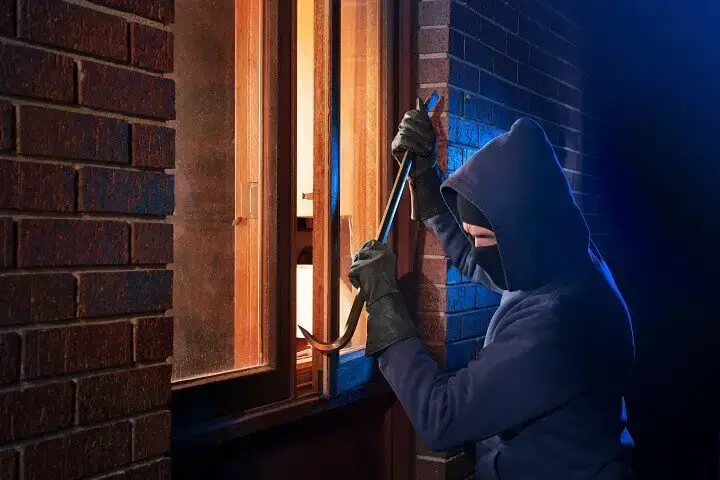
The vast majority of home invasions take place through doors and windows. It’s alarming to see how easy it is for someone to kick in a door, and even as kids we often learned the hard way how easy it is to break a window. Both represent the most vulnerable points of entry to any home, and there are various ways to secure them to increasing degrees.
You can have cast iron doors and prison bars on your windows, but if you live in a wood frame home with aluminum siding, a man with an axe can get through any wall in less than a minute. With a chainsaw, it will take seconds. Anyone who has ever erected a stud wall with sheathing on the outside and drywall on the inside knows the materials are easy cutting for an axe or chainsaw.
Roofs are just as fragile with sheets of plywood over rafters as the primary structure. It would be unusual for anyone to take this brutal approach, but an unoccupied home particularly in a remote area would be an easy target for this level of forced entry.
Securing a framed wall with wood construction is difficult and sometimes requires demolition. Here are varying degrees of wall and roof reinforcement that could be implemented. The best solution is a brick or stone home.
It’s hard to fathom forced entry at this level but in countries from Ethiopia to Colombia, this level of violence is not unusual. Hopefully it never comes to that in most other parts of the world.
It’s not uncommon for people who live in wilderness areas where hunting is both popular and frequent to apply some level of bulletproofing to their homes to protect from a hunter’s errant shot.
It’s also common in many urban areas in South America, the Middle-East, and Africa where urban violence is a regular occurrence. It’s also starting to show up more in more in many American inner-cities where gangs continue to treat the streets like a warzone.
Once again, there are varying levels of bulletproofing that can be applied to any home.
Bulletproofing is another extreme step but in many neighborhoods and parts of the world, it is another unfortunate and common practice.
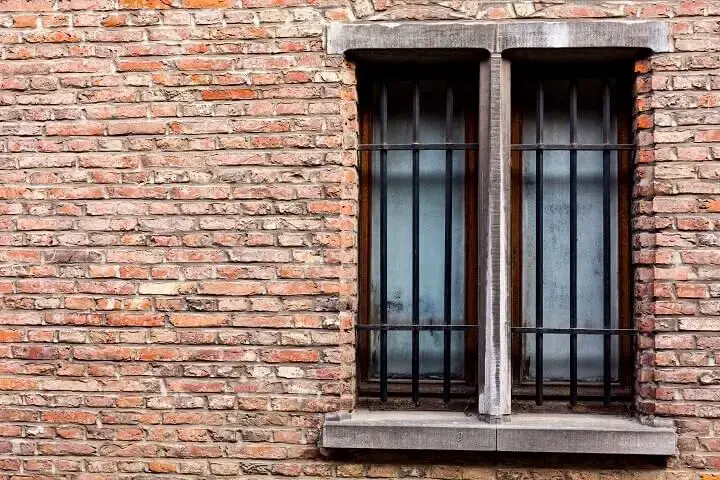
Wildfires continue to be a threat to many as a natural disaster, but the threat of fire during a manmade disaster comes from arson. As a mob mentality takes over in the streets, violence and looting for some reason always lead to arson. It’s probably because it’s so easy to start a fire as an act of raw rage.
Quite often, the threat of fire to someone’s home is not a threat directed at them but the side-effect of neighboring buildings or neighborhoods in flames. Fireproofing a home is best done during the construction phase and a brick home emerges once again as a good defense against fire.
Then again, there are some simple steps that can help prevent a fire from spreading to your home and many of these examples are a standard practice for people living in areas prone to wildfires.
A call to 911 should be a rapid first step, and if the fire is raging, it may be best to get your family out of the house and away from danger. Put out the fire yourself if you can but know when it’s beyond your capabilities and get out.
It doesn’t take a natural disaster or a societal collapse to have a problem with break-ins with detached structures. These structures include garages, sheds, barns, livestock pens, or any other out-building that is typically unoccupied by people and away from the main home.
These structures also tend to be coarsely constructed and finished doors, windows and locks are often not as robust as those found on a house. The good news is that the coarse construction is more forgiving for security measures that would be cosmetically unattractive in or on a home.
Most of the added security features on a detached structure are relatively inexpensive and easy to engineer or install.
Vehicles are often parked or stored outside. Cars are usually stored in a garage if we have one, but boats are often stored on trailers next to or behind the garage along with motorcycles, snowmobiles, jet skis and ATV’s. Regardless of the situation they are at risk if stored outside and particularly at a time of civil unrest or societal collapse.
There are steps to consider, and most fall in the category of common sense to at least prevent theft.
Alarm systems are not only designed to alert you to an intrusion but to sound a loud alarm to scare or deter any intruder and, in some instances, alert an alarm detection service via phone line, Internet or wirelessly. The service will sometimes call the home to speak to the homeowner who must then recite a pre-determined code to reassure the service that the alarm was either accidentally tripped or confirm the emergency.
If the alarm is a genuine emergency the service will contact either police, fire department, or emergency services. If no one answers the phone, the police are automatically notified. The alarms can also be connected to smoke detectors. Most home security alarms also have a panic button that can be triggered at the discretion of the home owner.
Alarm services will do the installation and will sometimes include the cost of equipment installed, but in return will require a subscription of their service with a monthly fee and a contract measured in months or years.
The alarms are usually connected to doors, windows, and motion detectors on the first floor. The services are not cheap, but the installation can usually be done in a day or two.
The use of force is justified to varying degrees in different states if someone breaks into your home in a violent fashion. However, trespassing is sometimes an accidental occurrence and just because someone approaches a home from any direction does not mean they are a threat.
The point is, you have the right to defend yourself on your property, but if you shoot somebody who turns out to be innocent or deemed harmless, the consequences can be severe.
In an instance when the intention or motivation of a person is unknown, non-lethal defense can protect you from the potential for criminal prosecution or legal action if you overreact to a situation you don’t fully understand. Various options are available.
Dogs are portable as well and can easily accompany you if for any reason you need to travel from the safety of your home.
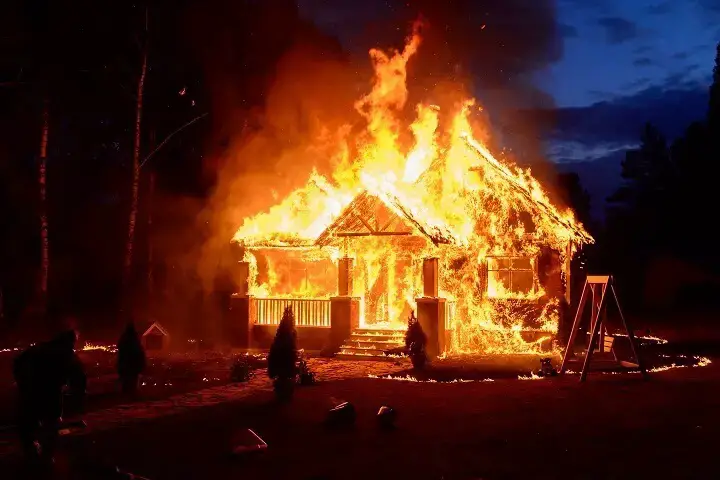
In an environment where violence is common, any home invasion is a direct threat to personal safety. The laws governing the use of lethal force are well defined in various states. but most will justify the use of firearms for violent entry to someone’s home. Unfortunately, there is great risk of misunderstanding a situation and over-reacting or escalating a situation.
Owning a gun is not an automatic guarantee of home safety and security. but in a desperate time. it may be necessary. Which weapon or weapons you choose to own depends a lot on your situation and location.
It’s hard to predict the degree to which electricity, Internet, and cell phone service will be available in a desperate time. The most important consideration related to communication is situational awareness. There are multiple options to consider for communication alternatives. Some are simple and others more complex.
Regardless of the complexity, communication affords you the ability to monitor local news broadcasts to understand what is going on in your area and the world at large, and to communicate with your family, friends, and neighbors to assess their health, condition, and well-being.
This level of two-way communication is also important if someone needs to travel away from home for more supplies, medical equipment or treatment, or to bring aid and assistance to a family member or friend at some distance away from home.
It would be comforting to say that societal collapse and civil unrest is an unlikely possibility in the United States, but there’s growing indications that some events are going from bad to worse.
We’re seeing some ominous signs already. Food prices are going up at every grocery store, shelves are empty from Costco to Walmart, homicides are up 30% since 2019, suicides are up 30% over the last 20 years, and deaths directly and indirectly related to COVID-19 are at 1.5 million in the U.S. and continuing.
There are growing signs that the stock market and housing market bubbles have burst, and some ominous economic indicators has economists looking over both shoulders.
It’s probably a very good time to think about intelligent stockpiling, acquiring tools, supplies, and equipment along with knowledge for a self-reliant and sustainable lifestyle, and seriously thinking about a fast path to enhanced home security.
Like this post? Don't Forget to Pin It On Pinterest!
You May Also Like:
The post Home Security After The Collapse: The Ultimate Guide appeared first on Urban Survival Site.
The post 15 Ways to Stretch Your Dollar in a Survival Situation appeared first on Simple Family Preparedness.
Keeping animals on your homestead safely and efficiently is mostly a matter of keeping them contained. With very few exceptions, if your animals aren’t properly housed, they will wander off and get into trouble, get hurt, or get lost. Different livestock species require a different approach, and when it comes to pigs specifically, you’ll have ... Read more
Housing For Your Pigs: What You Need to Know can be read in full at New Life On A Homestead- Be sure to check it out!
[…]
The post Sleep and A/B Testing appeared first on The Survival Mom.
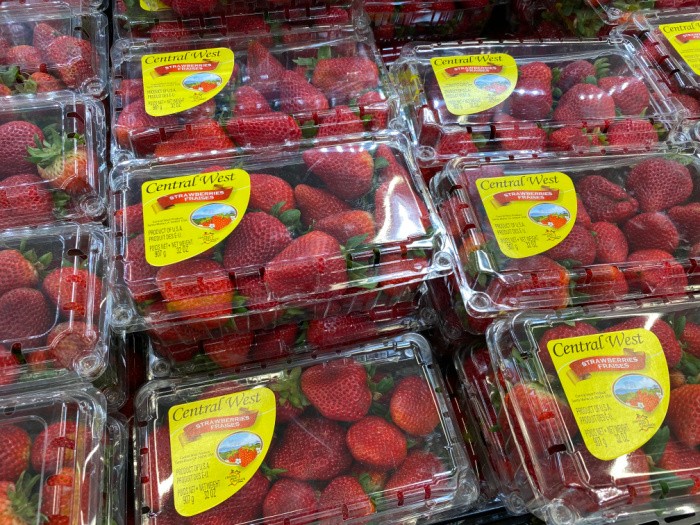
It’s all about what to stock up on in July today. This post is part of my ongoing monthly savings plan. We can save money on those items we need, or want if we are aware of the month they are at the lowest price possible. I realize prices on everything are going sky-high right now, but we may still be able to watch for markdowns on these items.
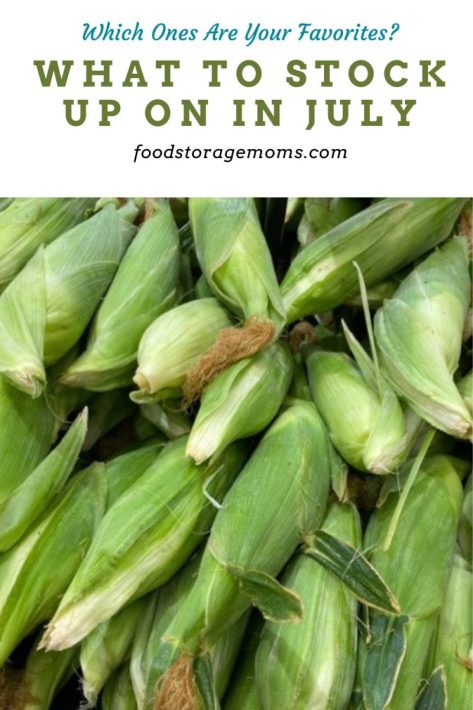
The summer is hot and fruits and vegetables are plentiful this month. Corn, cantaloupe, blueberries, strawberries, plums, peaches, and watermelon are all in season right now.
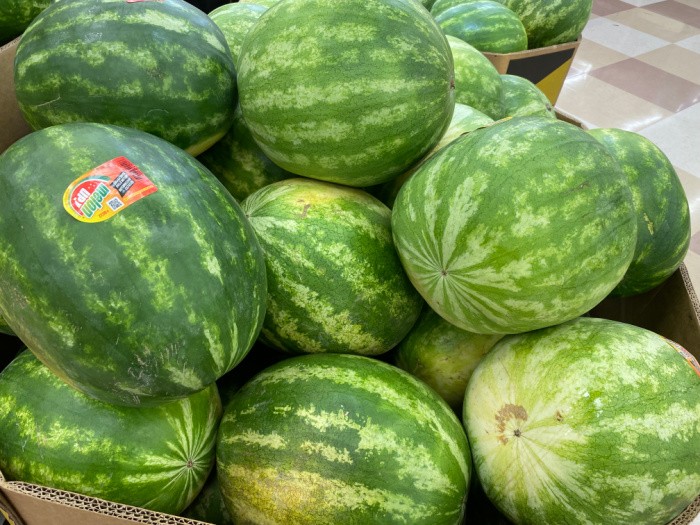
Watch for coupons and really good buys, even at stores like Target. I bet you can almost taste those fresh strawberries, right? Be sure and grab some whipping cream, and plan to make some shortcake! Watermelon slices are the best!
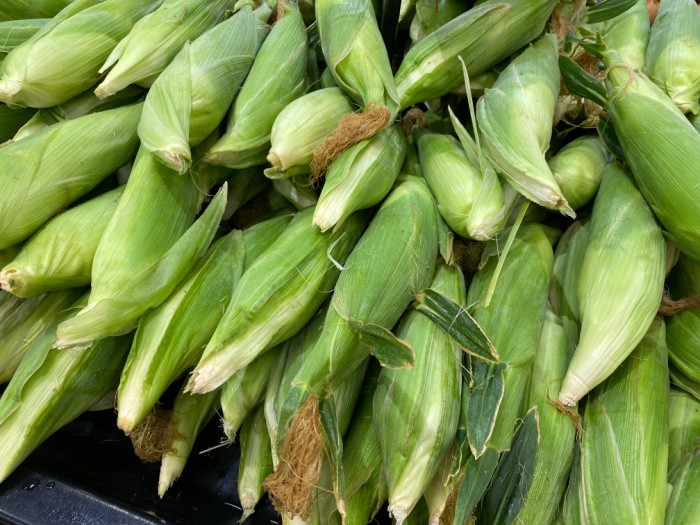
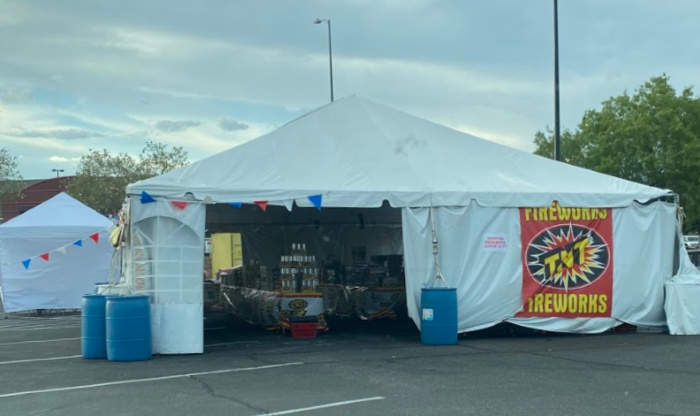
If your community allows fireworks, you already know July is the month to buy the leftover fireworks after the holiday to use for New Year’s celebrations, or to hold over until next year’s July 4th fun. If you live in Utah, you can use any leftovers to help celebrate the July 24th holiday, if fireworks aren’t restricted in your area. You can store fireworks in a safe, secure, and dry place and pull them out to welcome in the New Year or other holidays.
I love, love, love the colors, red, white, and blue. These colors bring out the best in everyone in the USA! I usually use plastic plates on July 4th, but this display at a local store caught my eye, so I took a picture of it. Life is so good!
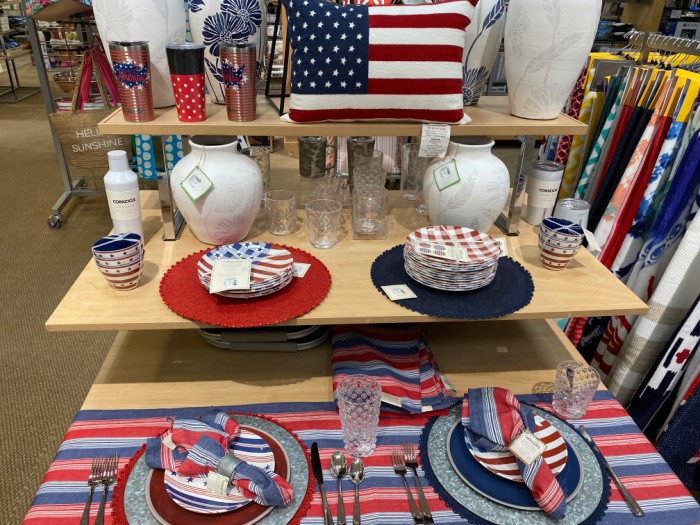
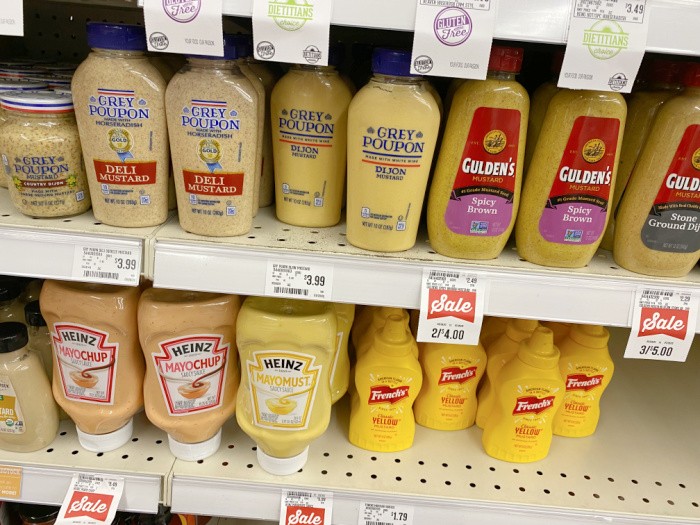
It’s a great month for stocking on up mustard, mayonnaise, and ketchup. Watch for your favorite barbecue sauce to be on sale as well. There may also be some savings on relish and pickles too.
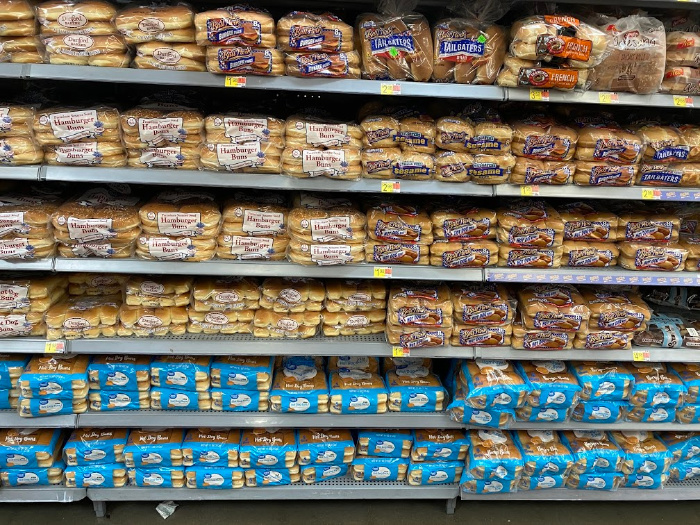
Most grocery stores stock up for that 4th of July barbecue and they don’t want to run out of the hot dog or hamburger buns. It’s a perfect time to stock your freezer with all kinds of buns for the fall and winter months. Condiments will be drastically reduced too. As mentioned above, it’s a great time to stock up on mayo, mustard, and other goodies to go along with the hot dogs and burgers. This is the month to stock up on paper plates, cups, and napkins for picnics and possible emergencies.
It’s a great month for having a barbecue! Watch for sales on hamburger meat, hot dogs, and steaks. Meat products as a group are pretty expensive right now. Consider trying other options like ground turkey or beef substitutes. Also, consider pork options, pork seems to be on the cheaper side.
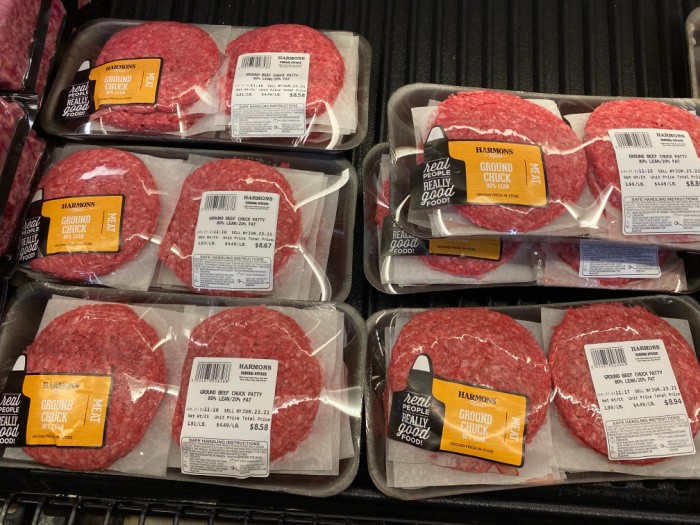
Can’t you just smell the barbecue right now?
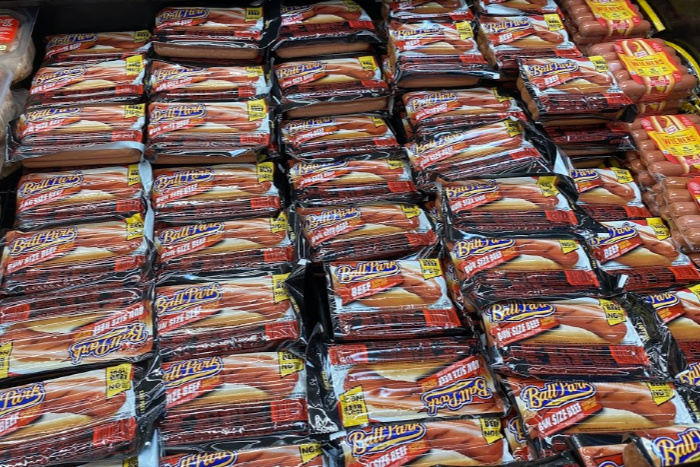
Here’s the deal with meat in the summertime, grocery stores stock up big time hoping to sell a lot of meat for those barbecues! You will see some discounting, but don’t expect to see pricing as we’ve had in the past. If you do find some good buys, it could be the time to stock your freezer with hot dogs, hamburger meat, and steaks. As we’ve all seen, meat prices have been going up the past few months, so I’d suggest looking for deals during the holiday period now before you see them go up even more.
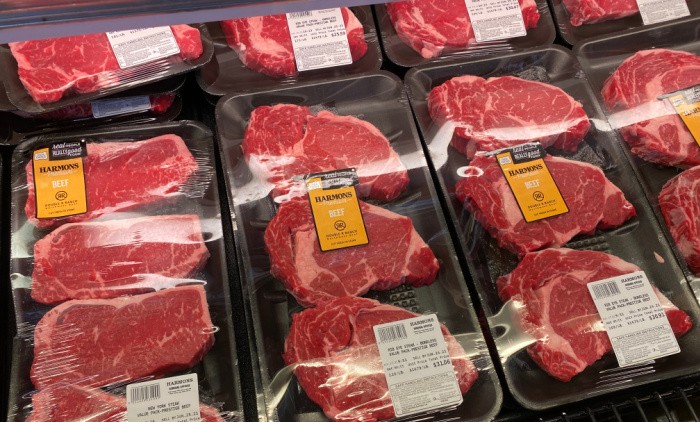

Ice cream in every form will be on sale this month. I have seen some significant discounts in July, and I stock up on all the ones we love the most. Don’t forget to watch for coupons at your local stores, and even the pharmacies. Our local Smith’s store often has great deals on various brands of ice cream, particularly their house brand. What a fun way to help deal with those hot days, and enjoy a treat at the same time!
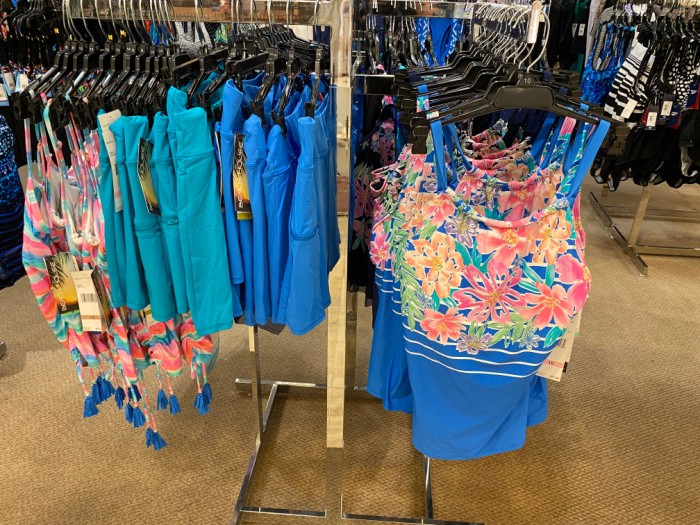
July is a great month to find that swimsuit you have been looking at that was maybe too pricey. I bet it is on sale, if it’s still available. You will see 40%-60% off swimsuits, beachwear, beach towels, floating devices, goggles, and pool toys.

If you like to buy designer clothing, July is a great month because Nordstrom’s and Dillards typically have their half-year clearance sales going on with drastically reduced prices. Just be prepared to possibly stand in line, just giving you the heads up.
The stores are gearing up for the fall clothing lines and back-to-school stuff coming in and they need to unload their summer items. Don’t forget to look for great buys on sandals, summer shoes, and designer flip-flops.
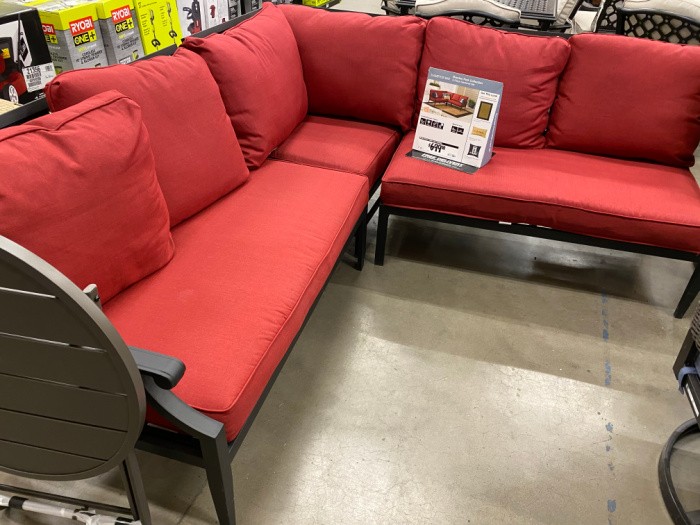
This is a great month to pick up an outside table and chairs set or those outside rocking chairs you have been wanting. These could be about 40%-50% off the original price. The stores are looking to clear out the summer fun items and getting ready to stock space heaters and fireplace inserts.
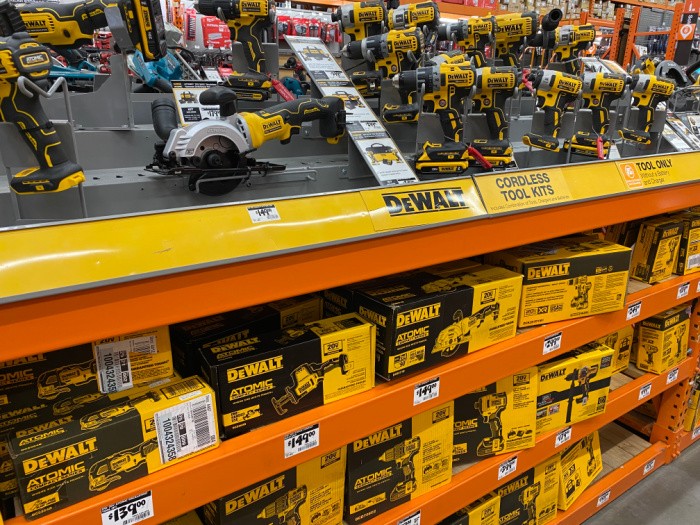
Because Father’s Day was in June, you will now see specials on the tools the stores have stocked up on and didn’t sell as expected. Grab those tools you need to start that project you have been needing to do. Mark and I saw the Craftsman tool display, boy did that bring back some good memories. We helped build out many basements for family and friends with Craftsman and DeWalt tools over the years.
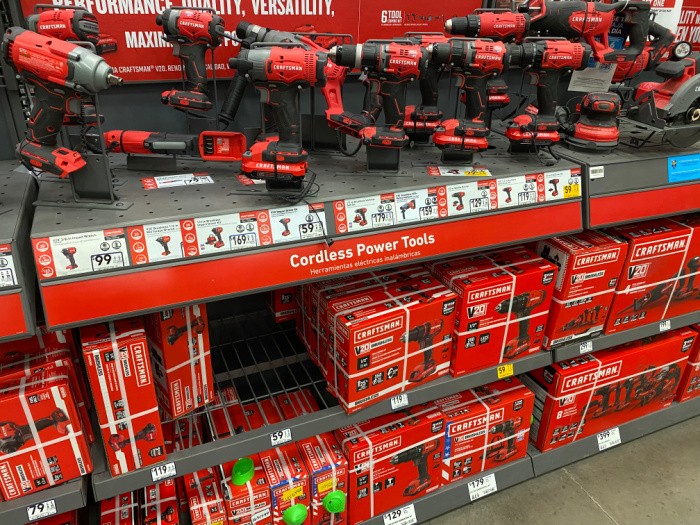
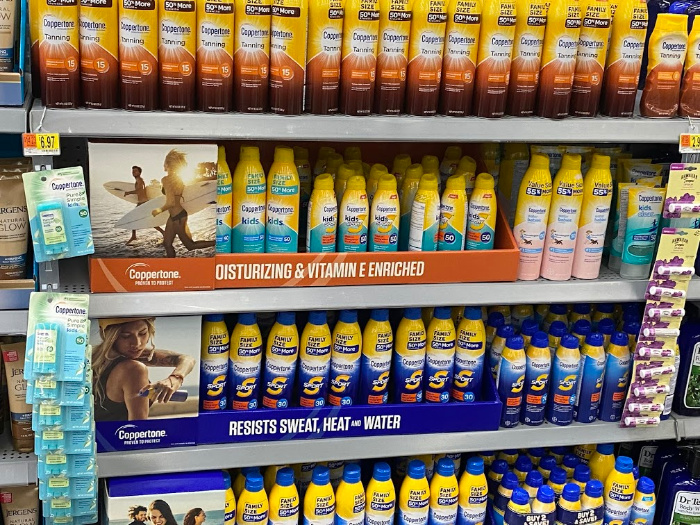
You probably know how expensive sunscreen can be. I stock my hall closet big time for family and guests. Every once in a while I see it for 30%-50% off the retail price. Because we used to live in Southern Utah (the desert), I had plenty of sunscreen in my pantry since I didn’t want anyone getting sunburned. I’ve always felt it’s critical to have several containers on hand. Check your mailbox for coupons to Target and other local stores. My favorite brand is Aveeno 50 SPF. I go right to the section where it’s marked down every July.
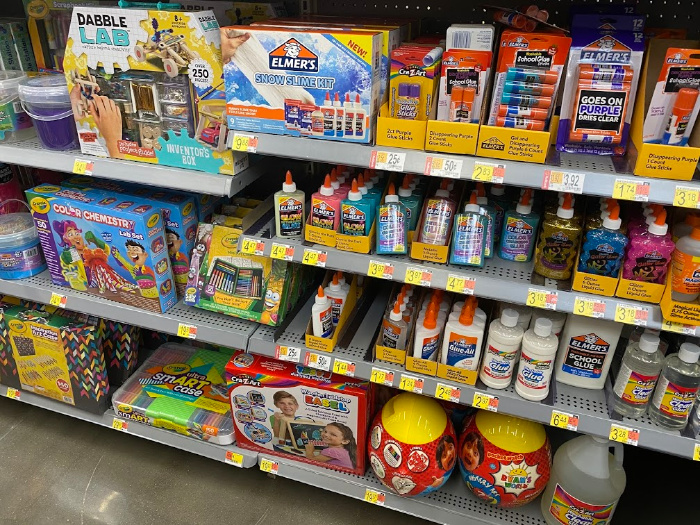
If you have kids going back to school, July is the first month to stock up for school while the best supplies are fully stocked on the store shelves. You will see rock-bottom prices on items you need to fill those backpacks. The prices will go back up the closer it gets to the first day of school because the supplies will be depleted. It’s all about supply and demand.
You will see binders, calculators, pencils, pens, paper, pencil boxes, etc. They will also have glue, glue sticks, and other necessary items on sale!
I hope today’s post helps you with what to stock up on in July. It’s a great time to buy those items we need at the very lowest price available this time of the year. May God bless this world, Linda
Copyright Images: Shopping Basket Deposit photos_51821091_xl-2015, Hands with pink piggy bank Deposit photos_32884157_s-2019
The post What To Stock Up On In July appeared first on Food Storage Moms.
One of the very best things about owning chickens is how cheap they are. One quick trip to the tractor supply company and a swipe of a little debit card, and pretty soon you can be coming home with 12, 20, or who knows how many chickens with money left over for dinner. It’s wonderful! ... Read more
21 Frugal Chicken Coop Ideas for Next to Nothing can be read in full at New Life On A Homestead- Be sure to check it out!
The post 20 Survival Foods That Can Last For Decades appeared first on Simple Family Preparedness.
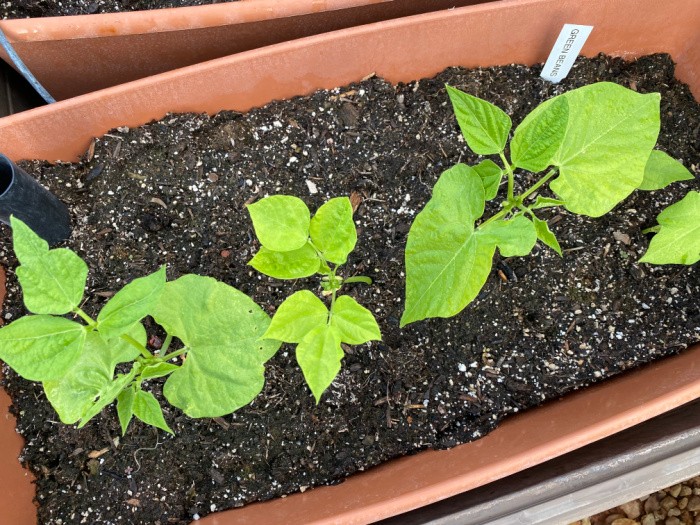
Today, it’s all about what to plant in July. You still have plenty of time to plant seeds or seedlings this month. It’s not too late to grow and enjoy a fall harvest crop in late summer or early fall before the first frost date. By the way, how is your garden doing with the warm soil conditions? There is something special about a fall garden that is still in bloom and provides veggies you can enjoy all winter.
One good thing about this recent gardening season is that most of the country has had ample water from heavy winter snow and plenty of spring and early summer rain storms. We didn’t have to plant those drought-tolerant plants this growing season.

I like to update this post every year with new tips. This week, I would normally be planting more cilantro, carrots, zucchini, green onions, and green beans. You may remember that I’ve moved up north to build a small home, so I don’t have a garden this year. I’m looking forward to next year when the construction is done and I can lay out my small garden plot.
The house is almost complete this week. The kitchen cabinets are in place, and the countertops will be installed later today. It’s been nearly three years and frustrating, but it is what it is. I cannot have a garden this year; we must concentrate on moving into the house and emptying the climate-controlled storage units.
Where I buy my garden seeds: SeedsNow
I highly recommend planting flowers near your garden because if you have flowers, the bees and other pollinators will come and help pollinate your garden plants. Oh, and don’t forget the butterflies that pollinate and add fun color to the garden. They are magical to me. Perennial Salvia plants are my favorite flowers to bring bees to my garden area. Because they are perennials, you cut them back a few times a year, and they keep coming back, as do the bees. These are the seeds: Perennial Salvia.
Check here to find your zone.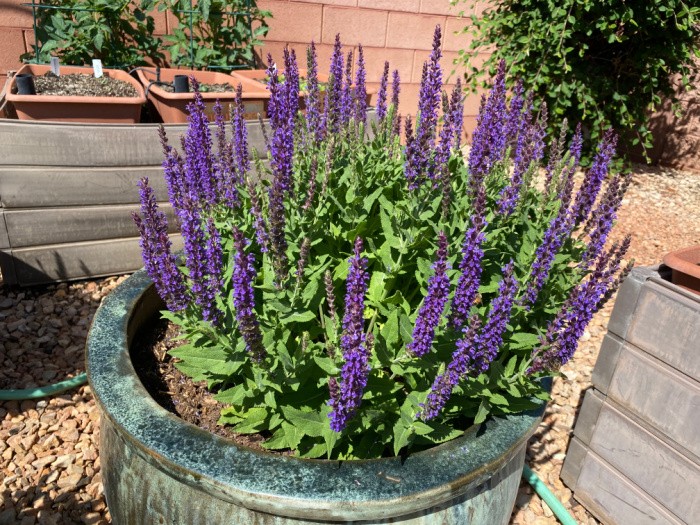
Plastic Photo Container and Label Maker
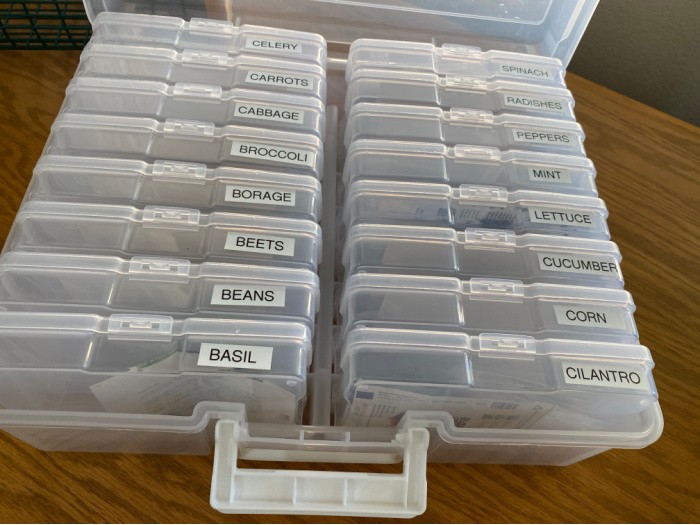
Where I buy my garden seeds: SeedsNow
I highly recommend these products for growing your seedlings: CowPots and Organic Seedling Soil. You plant your seeds and place the CowPots in your garden when the temperatures are right based on your specific hardiness zone location.
People probably say that having the right pH level in your garden soil is essential for a successful harvest. You may wonder what pH level means when gardening and how to determine your garden soil’s pH level. Each plant prefers a different level of acidity to grow the very best harvest. The level of acidity desired varies between each plant.
Therefore, you can adjust the pH of your soil by adding lime or sulfur to bring it up or down, depending on what your soil needs. You can have your soil tested, possibly by your state extension service, or try to do it yourself with a soil tester. pH Tester Also, some local nurseries provide that service for their customers.
All you need is a paintbrush or cotton swab (see below). If you need to hand pollinate because you aren’t seeing any fruit develop on your garden vegetables, here is something you may want to try. You do this by removing the male blossom (male blossoms don’t have fruit behind them).
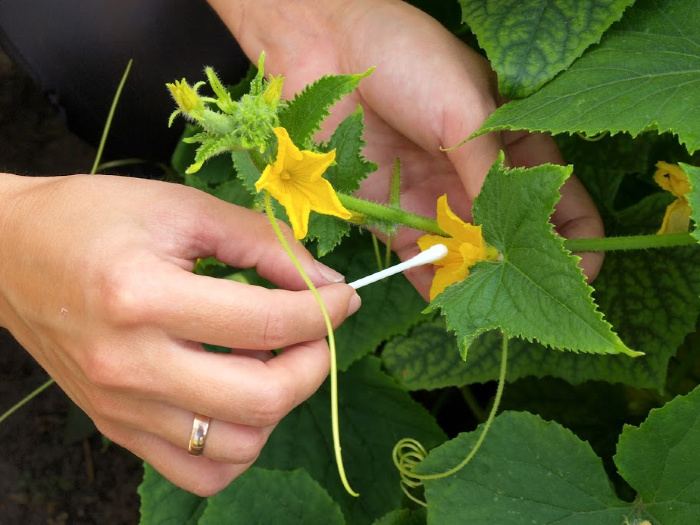
They produce pollen, leaving the center covered in the pollen to collect with the brush or swab. Use a brush or swab to apply the pollen you collected to the center of the female flower. This works for squash, melons, herbs, and cucumbers.
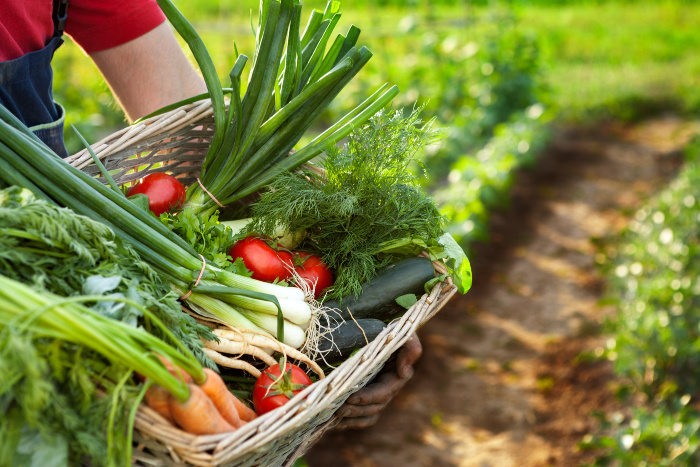
July is not too late to start a garden. It can be a perfect time, depending on your time zone. It’s interesting how the zones have changed a bit because of the temperature change worldwide. Planting times have changed a lot. Here is what you can plant by zone:
While July is peak harvesting time for many places, the cooler climate locations can start planting their gardens. If you live in zones 1-3, it is prime time to start planting the following:
Zones 4-5 are found throughout the Northern Midwest and New England. Here is what you can plant in these zones during July:
In zones 6-7, you have mild temperatures during this time. This means it is the optimal time to grow some of these plants in your garden:
When you live in the southern states, it is pretty hot during July. But there are still several items you can plant. Here are just a few:

Cucumbers thrive when the weather is hot and receives a lot of water. Plant them in full sun. If you planted seeds inside, don’t set your seedlings outside until the weather is in the 70-degree range.
Check the last frost date and wait two weeks before planting the seedlings or seeds outside. You can plant a second set of cucumber seeds in the first week of July and still be able to harvest them before the first fall frost date.
Decide if you want to grow bush cucumbers or cucumbers on the vine. I have always had better luck with bush cucumbers, which work great in pots or small gardens.
This is why they do better in my raised gardens. I suggest you stagger when planting the seeds because you will have cucumbers bearing at different times during the growing season instead of all at once producing a huge harvest.
Cucumbers like compost and composted well-rotted manure. They need well-fertilized soil. Cucumbers grow fast and don’t depend on much care or work to get them to thrive. When watering, try to keep the leaves dry to prevent leaf diseases from forming.
Male blooms show up first and drop off. No worries; a female flower will appear within a week or two. If not, you may have to do hand pollination. You remove the male blossom, leaving the center covered in the pollen. Use a brush or cotton swab to apply the pollen you collected to the center of the female flower.
Use metal cages for vines. The cucumbers will hang better on those because they attach more easily to the wires when growing. Plant two to three seeds about one inch into the soil and cover them with soil.
If the soil is moist and warm, you will see sprouts within a few days. Plant the seeds or plants 36-60 inches apart. Bush cucumbers can be planted closer. Cucumbers grow from start to finish in 50-70 days.
pH level for Cucumbers: 6.5 to 7.0

I have always grown bush beans. Their growing time is shorter, 60-70 days, which is just enough time if you plant the seeds in the first few days of July.
This is one of my favorite vegetables to grow. When our girls were growing up, we grew many green beans. We canned bushels of them in our pressure cooker.
They taste so good when they are freshly picked. I only grew bush beans, but you can plant pole beans if you can support them off the ground.
Bush beans grow about 2 feet tall, and pole beans grow up to 10 feet tall. Bush beans are ready to pick about 50-55 days after planting. Pole beans take a bit longer, so plan 55-65 days to harvest.
Please remember, if you can stagger the plantings every 2 weeks you can harvest green beans for weeks rather than all at once in one week.
Green beans are like well-composted, rich soil with rotted manure. You plant the seeds 1-2 -inches deep and cover them with soil. Space the seeds in rows about 6-8 inches apart.
Water them immediately and regularly until they begin to sprout. After sprouting, they need 1 to 1.5 inches of water each week. They need full sun, so plan accordingly. They grow best when the air temperatures are between 65 to 85 degrees.
When the green beans are the size of a pencil, they are ready. They can toughen up very quickly, so check on them often. You pick them by snapping them off at the vine.
pH level for Green Beans: 6.0 to 6.2
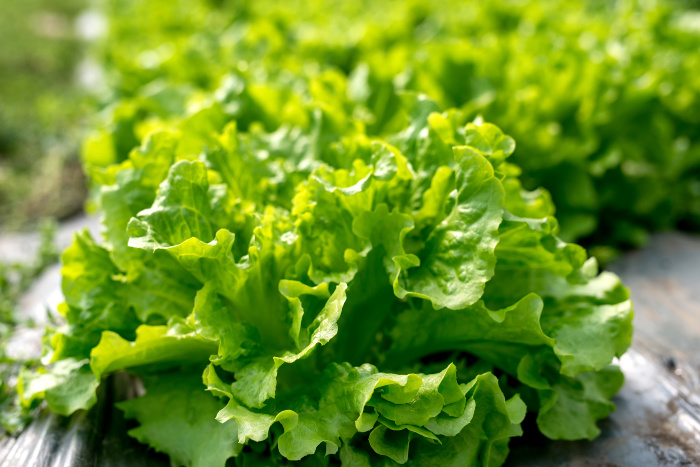
The nice thing about lettuce is that it’s easy to grow and sprouts quickly. Just make sure the soil is loosened, loamy, and well-drained. Lettuce loves nitrogen and potassium, so keep your eye on the leaves as they grow.
Work in a lot of organic matter or compost. Lettuce matures in 55 to 60 days. Romaine takes longer to mature, and so does head lettuce varieties.
Summer Lettuce Seeds: Summer Bibb
Adriana, Coastal Star, Red Cross, and Muir are other heat-resistant varieties.
Plant the seeds about 1/4 inch deep, tamp them in the soil, and water them. Easy and simple. Read the package to space according to the lettuce you choose. Seeds will not germinate in soils above 80 degrees F.
You can start some seeds indoors and transplant the seedlings into a shady spot when the weather is too hot outside to start the plants directly in the soil. You may want to choose heat-resistant varieties if you live where the temperatures get too hot in the summer.
It’s better to pick early than late in the growing cycle because the leaves become bitter if you wait too long.
pH level for Lettuce: 6.0-7.0
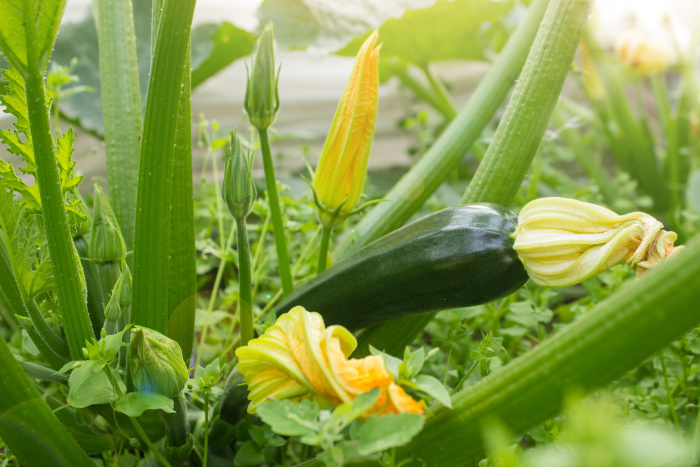
Summer Squash: zucchini, crookneck, and straight-neck (harvested in the summer before they reach maturity). You can start a second planting if you plant the summer squash seeds by the first week or so of July.
Winter Squash: pumpkins, butternut, spaghetti, and acorn squash (harvested in the autumn months after they reach maturity).
When you plant the seeds, test the soil to ensure it is at least 60 degrees F. before sowing. They need total sun exposure, loamy soil rich in nutrients, and proper drainage.
Plant the seeds in hills (2-3 each) one inch deep. Space them 2-3 feet apart. Thin as needed to produce the most vigorous plant. Use a cloche to keep the plants warm in case of cool weather.
Mulch the plants to keep them moist and weed-free. When the first blooms appear, fertilize the plants.
Water deeply, at least one inch of water per week. The soil needs to be moist at least 4 inches down. If your blossom ends turn black and rot, you have blossom rot. It’s usually caused by uneven moisture in the soil. It could also be a calcium problem.
Water must be consistent and frequent for the fruit to produce. If the fruits are misshapen, they may not have received enough water or fertilizer. Check for fruit you can pick daily; they grow faster than you think.
pH level for Squash: 5.5-6.8
It’s all about self-reliance, and gardening is a great way to do it. It doesn’t have to be the most enormous garden on the block; it can be on a small deck with pots planted with the seeds of the plants you love to eat.
It can be a shared piece of property or several acres. Whatever we can do to produce some of our food is one of the best ways to teach our families to care for themselves.
So, if you were wondering what to plant in July, now you know, and you can pass this information on to your neighbors. Thanks for being prepared for the unexpected. May God bless this world, Linda
Copyright Images: Gardening AdobeStock_218588157 by Irina Fischer
The post What To Plant In July appeared first on Food Storage Moms.